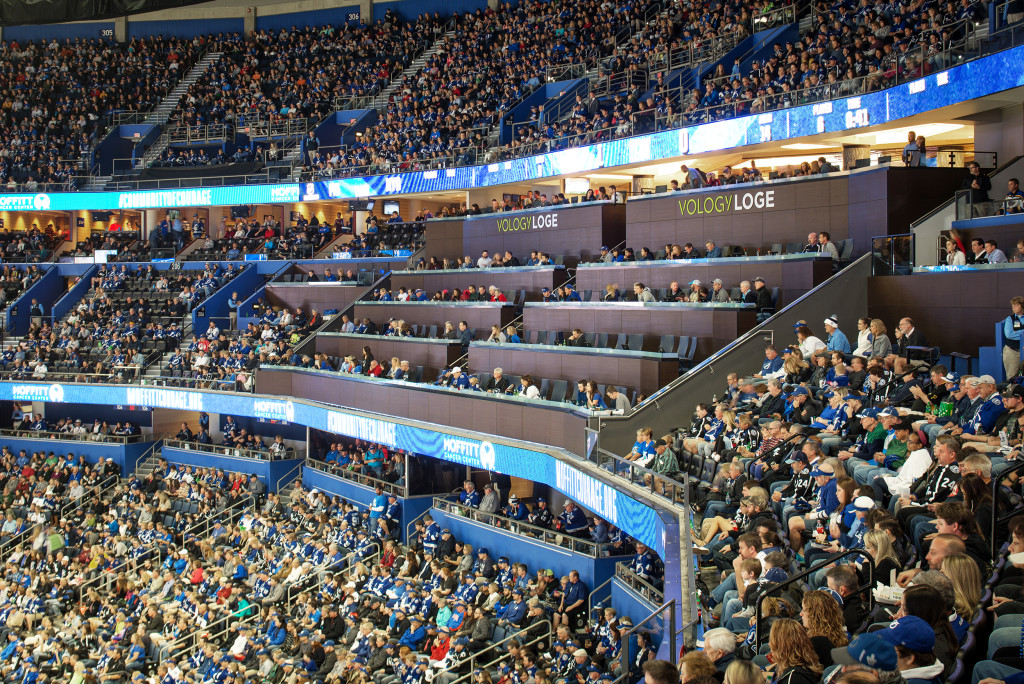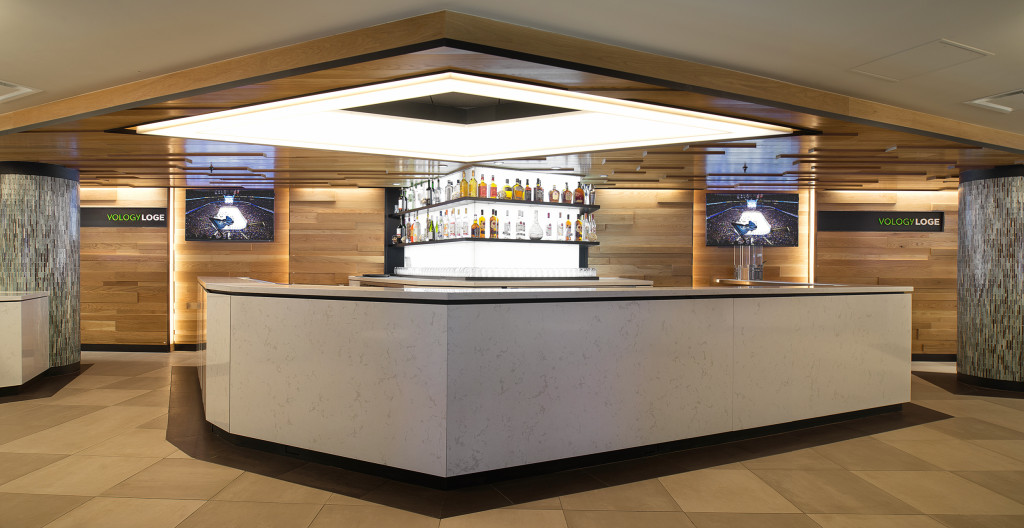Following its most recent round of upgrades, Amalie Arena—home of the Tampa Bay Lightning—is equipped with the latest in technology and premium seating options.
This $25 million, two-year round of improvements began before this season, giving the arena new loge boxes, upgraded concessions, new restrooms, and an expanded outdoor deck, helping to make the arena more viable for years to come.
That round of upgrades was just the latest in the Lightning’s ongoing effort to enhance Amalie Arena. Changes to the venue, which first opened as the Ice Palace in 1996, were put into motion by Jeff Vinik in 2011, just about a year after he purchased the team. Since that time, the arena has received over $85 million in renovations.
All of those improvements—including seating bowl, video production, premium space enhancements—have worked cohesively, but the loge boxes are the latest example of the renovation’s success. According to Mike O’Donnell, the arena’s Sr. facilities project manager, the loge boxes represent a step between club seating and luxury boxes. For individuals or businesses that can’t manage a full-sized suite but want a different experience, loge boxes—which come in ticket packages of four, six, and eight—can be a viable solution. “It really fits within that niche,” said O’Donnell.
Apparently, that was a niche that Lightning fans wanted filled. Before this season began, the team sold out all 34 boxes in the Vology Loge area.
The trend of loge seating has been carrying out in major sports for some time, and for arena planners, it is a result of teams meeting evolving demands. “It is a more direct response to the trend of how people are enjoying the game these days from a corporate and hospitality standpoint,” said Mike Kress, chief architect and partner in charge for Generator Studio.
Generator Studio was tasked with designing the enhancements to Amalie Arena. Kress, along with design director and partner Tom Proebstle, worked with the Lightning to ensure the loges could be utilized at all times, including non-hockey events. One of the biggest steps in this process was situating the loge area between sections 207 and 210, which not only placed the seats over the goal, but gave them a direct perspective for end-stage concerts.
“As we talked about the experience, we talked about the flexibility of the space,” said O’Donnell. Loge seating is built to be a more social space that allows for a focus on the game. In addition, it comes with branding options for companies, a bar area, and other hospitality-related incentives. “All of those things tie into a higher level of service that people are coming to expect in arenas that relate to the hospitality aspect,” said Proebstle.
Along with providing a good view of the action and a flexible social space, the loge seating offers the latest in technology. The sections are equipped with tablets, which give fans the ability to stream select sports channels, call for wait service, order merchandise, watch highlights, and more. Given the effect that digital devices are having on all facets of life, including sports, it has been up to teams and operators to find ways to compete for attention. For Lightning fans who want to be engaged in technology while taking in the action from the comfort of a loge box, the tablets offer a solution.
“That was an opportunity we had to make that connection with those fans,” said O’Donnell, who emphasized the Lightning’s efforts to tap into technology. He added that the tablets involve the game and technology by “trying to combine those aspects and putting that power into the viewers lap.”
The general look and feel of loge seating is inspired by traditional theatre boxes, which can provide better sightlines, but are not always going to blend in easily at an arena. However, the priority in creating the Vology Loge, and other premium areas in Amalie Arena, was to ensure that it was built to fit into its surroundings. “We were very keen on making sure that everything seemed very well integrated, almost as if it had been originally designed this way,” said Kress. “Sort of the edict to us was that these group areas needed to be secondary to the visual presentation of the bowl.”
“That’s where our goal was,” said O’Donnell, pointing to earlier renovations that included changes to the seating, a new videoboard, and the installation of LED ribbon screens that were aimed at giving the arena a more cohesive feel. “We really took it to heart that less can be more. We really tried to refine our palate.”
Last offseason’s renovations brought about other significant changes to the club level, which now has four distinct areas and upgraded food and beverage offerings. An extended outdoor deck was also placed on the northeast section of the club level.
“There are different things along the club way that not only break up the experience, but provide unique offerings that will be appealing to different people,” said Proebstle. The club level includes numerous specialized concession stands, plus a cask and barrel bourbon bar, and spaces dedicated to local restaurants. Proebstle added that to blend the club level section together, the space was decorated with local artwork and other material finishes that are unique to Tampa.
O’Donnell said that one of the main priorities for the Lightning was to create “more dynamic concession stands” by focusing on particular items and creating specialty areas. Along with improving the fan experience, this change also allowed for more productivity for those involved in service. “We’re really letting them focus on one core competency, and focusing on service efficiency.” Another crucial change to the concessions was the installation of Internet Protocol Television (IPT), which allows for digitalized menu boards.
When it comes to service, the renovations have allowed for a certain attention to engagement and fan experience that the Lightning has strived for over the last several years. Team owner Jeff Vinik has worked to energize the Lightning’s base of fans, not only through arena upgrades and investment in payroll, but to a commitment to community affairs through programs such as Lightning Community Heroes (not Hometown Heroes, as we originally stated) and C.H.A.R.G.E.—an employee volunteer initiative.
O’Donnell lauded Vinik for instituting these ideas, and said that they have spread into the arena’s service. “We put a whole lot of effort into training our staff, and really pouring it into them so that there’s a truly unique experience for every fan in this building.” He also credited Hillsborough County, the arena’s owner which contributed $12.5 million in hotel/motel tax dollars to the renovation, for working well with the team.
For Generator Studio, the Lightning’s objective was relevant to planning every aspect of the renovations. “Part of the reason that the space works is that their philosophy has been woven into everything we made,” said Kress. “We always are going back to their vision of what they’re trying to drive home.”
“It helped cut through the clutter,” added Proebstle. “Having those conversations up front about where the leadership sees the team going, at all levels, ties all of that together.”
The next step in the renovation phase will take place after this season, when the Lightning plan on overhauling the Lexus Lounge. That renovation works towards the Lightning’s goal of making the arena viable for years to come. Throughout this time and in the future, the hope is that the arena experience—through technology, customer service, and more—will keep people coming back. “That’s ultimately what we want,” said O’Donnell.
All images, unless noted otherwise, are courtesy of Generator Studio.





